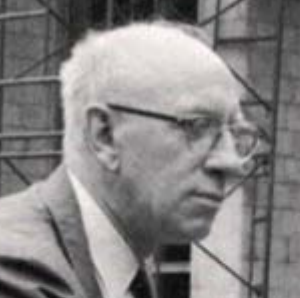Robert Bishop
Mid-Century Modern Architect At the age of 65, when most folks are settling into retirement, Frank Lloyd Wright was gathering his experiences into the imagining of an entire city. Broadacre City would be a four- mile-square urban environment tailored to the rise of the automobile with most every resident would be luxuriating in a one-acre plot. Wright unveiled his vision in a 1932 book, The Disappearing City, and set his disciples at his Taliesin home and studio to work building a scale model. The work would continue for the better part of three years.
At the age of 65, when most folks are settling into retirement, Frank Lloyd Wright was gathering his experiences into the imagining of an entire city. Broadacre City would be a four- mile-square urban environment tailored to the rise of the automobile with most every resident would be luxuriating in a one-acre plot. Wright unveiled his vision in a 1932 book, The Disappearing City, and set his disciples at his Taliesin home and studio to work building a scale model. The work would continue for the better part of three years.
One of the students immersed in the Broadacre City model was Philadelphia native Robert Forsythe Bishop. Newly graduated from Swarthmore University, Bishop attended a series of Wright lectures at the University of Pennsylvania in the fall of 1931 and soon packed his bags to study under Wright in Wisconsin. Bishop would stay a fellow at Taliesin for three years. When the Broadacre model was finished he helped bring it to New York City for display in 1935 and then peeled off to return to Philadelphia to kickstart his own design career.
Bishop soon tapped into his own utopian community. He became connected with Bryn Gweled Homesteads that was a co-operative of 13 Philadelphia Quaker (Bishop was raised a Quaker) families who pooled $18,000 to purchase a 240-acre Southampton farm. Bryn Gweled is a Welsh term translating to “Hill of Vision” which in this case meant a two-acre homestead where people of diverse backgrounds could experience communal living with shared responsibilities and rewards. Bishop was one of the handful of architects to design houses on the 81 lots, one of which – Lot 80 – became his home.
After finding work with several Delaware Valley firms Bishop formed a partnership with John Walter Wright (no relation to Frank) in 1945 when he was 37 years old. Wright, six years younger, was a Cheltenham High graduate and standout architecture student at the University of Pennsylvania. Wright’s professional background was in industrial arts and engineering while Bishop brought his talents for working with natural materials and wood from his years at Talisin to the team.
The partnership spanned six productive years and Bishop continued to practice another two decades after its dissolution. In addition to his design work, Robert Bishop became a lecturer in the School of Fine Arts at the University of Pennsylvania in the 1950s. In that role, he was part of dean George Holmes Perkins’s energetic efforts to hotwire the transition of the school’s classical Beaux-Arts teachings to modern progressivism.

